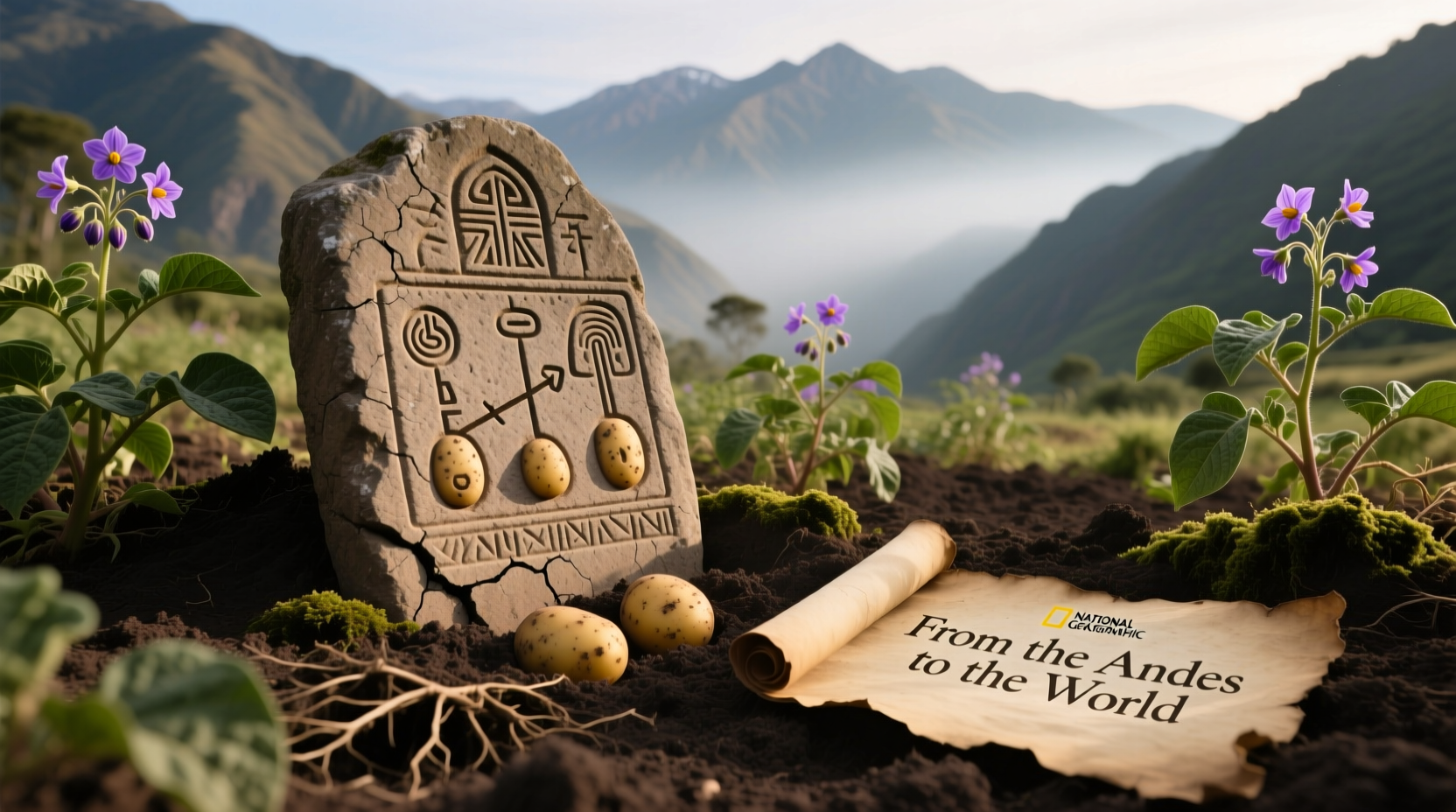The humble potato's journey from obscure Andean tuber to global dietary staple represents one of history's most significant agricultural transformations. This comprehensive exploration reveals how a single crop reshaped economies, altered population patterns, and even influenced the outcome of wars across continents.
From Ancient Andes to World Stage: The Potato's Remarkable Journey
Long before Europeans set foot in the Americas, indigenous communities in modern-day Peru and Bolivia had already mastered potato cultivation. Archaeological evidence from the region confirms potato consumption dating back to 2500 BCE, with genetic studies indicating domestication began even earlier—between 8,000 and 5,000 BCE. These early agriculturalists developed sophisticated techniques for growing potatoes at high altitudes, creating freeze-dried chuño for year-round storage, and cultivating thousands of varieties adapted to different microclimates.
When Spanish conquistadors arrived in the 16th century, they encountered this versatile crop that could thrive in conditions where traditional European grains failed. Despite initial European skepticism—many considered potatoes suitable only for animals or associated them with witchcraft—the tuber gradually gained acceptance. French scientist Antoine-Augustin Parmentier's famous 18th-century advocacy, including hosting potato-themed dinners for French aristocracy, helped overcome resistance across Europe.
| Historical Period | Key Developments | Global Impact |
|---|---|---|
| 8,000-5,000 BCE | Domestication in Andes region | Foundation for Inca civilization's food security |
| 1530s-1570s | Spanish introduction to Europe | Initial resistance followed by gradual adoption |
| 1700s | Widespread European cultivation | Population growth in Ireland, Germany, and Eastern Europe |
| 1845-1852 | Irish Potato Famine | 1 million deaths, 2 million emigrations, global diaspora |
| Present day | Global production exceeds 380 million tons annually | Fourth most important food crop worldwide |
Why Potatoes Transformed Human Civilization
The potato's historical significance extends far beyond its nutritional value. Unlike wheat or rice, potatoes deliver more calories per acre—up to 15,000 pounds per acre compared to wheat's 3,000—making them exceptionally efficient for feeding growing populations. This efficiency directly contributed to Europe's population explosion between 1700 and 1900, with studies from the Quarterly Journal of Economics indicating potatoes may account for up to 12% of the urbanization growth during this period.
However, this dependence created vulnerability. The Irish Potato Famine (1845-1852) demonstrated the dangers of monoculture when Phytophthora infestans (potato blight) devastated Ireland's primary food source. The resulting catastrophe killed approximately one million people and forced another two million to emigrate, permanently altering Ireland's demographic landscape and creating the Irish diaspora that shaped communities across North America, Australia, and Britain.

Scientific Advancements That Shaped Potato History
Modern potato cultivation owes much to scientific breakthroughs that addressed historical challenges. The International Potato Center (CIP), established in 1971 in Peru, has preserved over 7,000 potato varieties in its gene bank—more than any other institution globally. Their research into disease-resistant varieties has been particularly crucial, addressing the same vulnerabilities that caused the Irish Famine.
According to the Food and Agriculture Organization (FAO), today's global potato production exceeds 380 million tons annually, with China and India now surpassing traditional European producers. This shift reflects both population growth in Asia and the potato's adaptability to diverse growing conditions—from the high Andes to the plains of Punjab.
Unexpected Historical Impacts of the Potato
Beyond sustenance, potatoes influenced history in surprising ways. During the Prussian era, Frederick the Great mandated potato cultivation to ensure food security during sieges. In Russia, Catherine the Great promoted potato farming to strengthen the empire's agricultural base. Even military strategy evolved around potatoes—Napoleon's troops carried dehydrated potato soup, and World War I soldiers relied on potato-based rations.
The crop's journey also reveals fascinating cultural adaptations. In Germany, potatoes became central to dishes like Kartoffelsalat and Bratkartoffeln. In India, they transformed curries and biryanis after their introduction by Portuguese traders. Each region developed unique preparation methods that reflected local culinary traditions while incorporating this versatile tuber.
Preserving Potato Diversity for Future Generations
Today, agricultural scientists face the challenge of preserving potato diversity while meeting global food demands. The Svalbard Global Seed Vault in Norway stores duplicate samples of potato varieties from the International Potato Center, safeguarding genetic resources against potential disasters. Meanwhile, traditional Andean farmers continue cultivating hundreds of native varieties using methods passed down through generations—a living connection to the potato's ancient origins.











 浙公网安备
33010002000092号
浙公网安备
33010002000092号 浙B2-20120091-4
浙B2-20120091-4